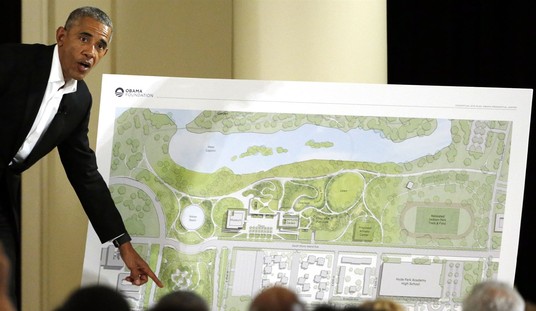On January 25, a little before 4:00 a.m., a clerk at the Quick Chek on Route 28 in Branchburg, New Jersey, noticed a black male in a military jacket acting suspiciously inside the all-night convenience store. The clerk called the police. Patrolman Steven Cronce showed up and, after conducting a field interview, agreed with the clerk’s assessment. The man, whose name is Lloyd Woodson, was acting “extremely nervous.” Suddenly, the man ran. As Woodson fled, the policeman noticed his “back was flat,” which led him to believe Woodson might be wearing a bulletproof vest.
Outside, Lloyd Woodson disappeared inside a nearby trailer park. Patrolman Cronce called for backup, and soon a group of officers were canvassing the area for the suspect. There was a chase, a tackle, and Woodson resisting arrest. The pepper spray came out.
According to the police report: “Woodson was concealing a loaded Bushmaster semi-automatic .223 caliber (5.56 mm) assault rifle, which had been altered to fire .50 caliber ammunition, inside of his military-style coat.” And under his coat, “Woodson was wearing a military-style ballistic vest with a reinforced front steel plate and had four additional loaded magazines, all containing ball type and hollow-point ammunition.” The Bushmaster rifle had a “defaced serial number.”
In other words, he was weaponed-up and ready to do battle.
New Jersey prosecutor Wayne J. Forrest ordered Lloyd Woodson’s local hotel room searched. There police found:
- a Bushmaster .308 caliber semi-automatic assault rifle with a defaced serial number
- a 37 mm Cobray grenade launcher
- a second ballistic vest
- a rifle mountable Nightsight Illuminator NP75 (Russia) night vision scope
- hundreds of additional .50 caliber and .308 caliber ammunition along with military pouches and garrison equipment
- a police scanner
- a military-style backpack
- a map of a U.S. military installation — which turned out to be Fort Drum
- a map of an out-of-state civilian community
- a Middle Eastern red and white colored traditional headdress, or keffiyeh
There is not much else to tell you about this story that you can’t already surmise. The angry, weapons-toting ideologue bent on killing U.S. soldiers has become a familiar narrative in the war on terror. So has the mislaid blame.
The important player in this story, at least as far as winning the war on terror is concerned, is the Quick Chek clerk on Route 28. Like the Dutch filmmaker on NWA Flight 253 and the video clerk near Fort Dix, the clerk’s actions no doubt saved countless lives. Sad but true, the clerk gets an A+ for counterterrorism work well done. Long gone is the idea of John Doe being “the last line of defense” — the clerk, the filmmaker, and the video duplicator are increasingly finding themselves on America’s front lines.
This is, I think, largely due to a second narrative, best represented this week in a news story that broke 24 hours later.
On January 26, a little before the business day began, former Senators Bob Graham and Jim Talent — chair and vice chair of the “bipartisan Commission on the Prevention of Weapons of Mass Destruction Proliferation and Terrorism” — released a “report card” saying the U.S. government is doing a bad job protecting the nation from terrorists’ WMD threats. In fact, say the former senators, out of 17 subjects to address, the U.S. government got three “Fs” and an “incomplete” — that one on implementing a comprehensive policy about nuclear risks in Pakistan, no less.
There are 535 members of Congress. There are 80 congressional committees and sub-committees dealing with homeland security. Eighty. And between them, they collectively failed three out of seventeen subjects and got an incomplete in the subject of Pakistani nukes.
These two stories epitomize what the war on terror has come to in 2010. The average citizen takes action, or is forced to take action, while an impotent Congress rearranges deck chairs on the Titanic for pay.









Join the conversation as a VIP Member